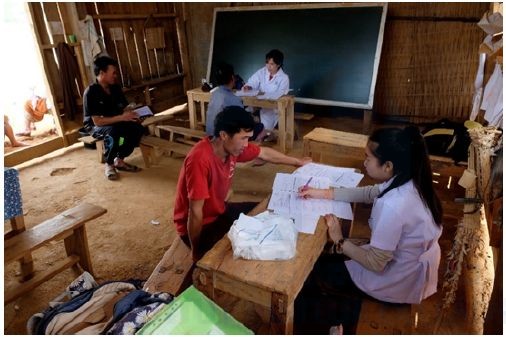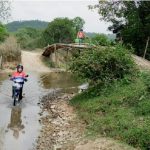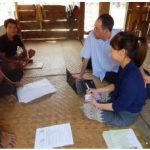Hepatitis A virus seroprevalence in XiengKhouang Province.

Participant recruitment, XiengKhouang Province.
Project coordinator: Claude P. Muller, Antony P. Black
LLL and LIH staff: Vilaysone Khounvisith, Phonethipsavanh Nouanthong
Collaborators in Lao PDR: Institut de la Francophonie pour la Médecine Tropicale.
Hepatitis A virus (HAV) outbreaks are common in underdeveloped countries with poor sanitation. Ingestion of HAV contaminated food or water primarily causes asymptomatic acute infection or induces symptoms such as jaundice (yellowing of the skin and eyes), dark urine, extreme fatigue, nausea, vomiting and abdominal pain. The province of XiengKhouang in the North of Lao PDR has had repeated outbreaks of HAV since 2012. In 2016 there were over 600 reported cases. The disease incidence and seroprevalence are poorly studied in Lao PDR.
A cross-sectional study was conducted between March and June 2017. 400 subjects were enrolled from outbreak areas; 13 villages in Peak district & 7 villages in Phaxay district, Xiengkhouang province were enrolled in the study. Five age ranges were randomized (5-10, 11-20, 21-30, 31-40 & >41 years old). Anti-HAV IgG antibodies were measured using ELISA kits and risk factors were assessed using a standardized questionnaire.
In terms of behaviour, life style and practices associated risk factors, we identified a significant number who ate raw fish, ate snails or did not wash their hands before eating. Participants had a significant and continuous exposure to HAV from an early age with the vast majority of the population being infected by middle-age. Risk factors varied according to age, ethnicity, and factors such as eating molluscs, water sources and shared items. Knowledge, attitude and good hygiene practices should be encouraged at the community level to prevent future outbreaks.
- Lao Lux lab staff and IFMT student on the way to village, XiengKhouang Province.
- Lao Lux Lab staff filling questionnaire. XiengKhouang Province.
- Local health staff, Lao Lux Lab staff and IFMT student, XiengKhouang Province.
- Lao Lux Lab staff discussing study with head of village, Champasack Province











